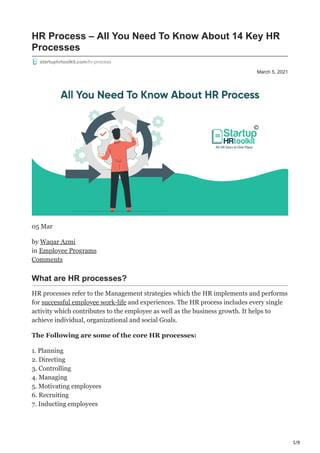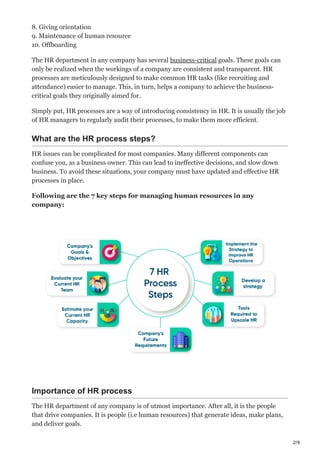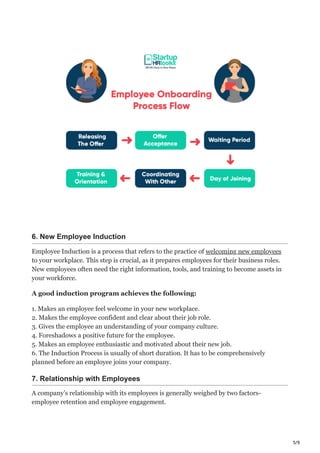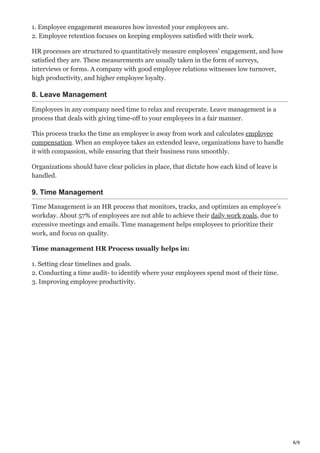The document outlines 14 key HR processes essential for managing employee experiences and supporting business growth, including recruitment, performance management, and onboarding. It emphasizes the critical role of HR processes in maintaining consistency, efficiency, and effective relationships with employees. Additionally, the document highlights the importance of systematic HR management to enhance productivity and achieve organizational goals.








